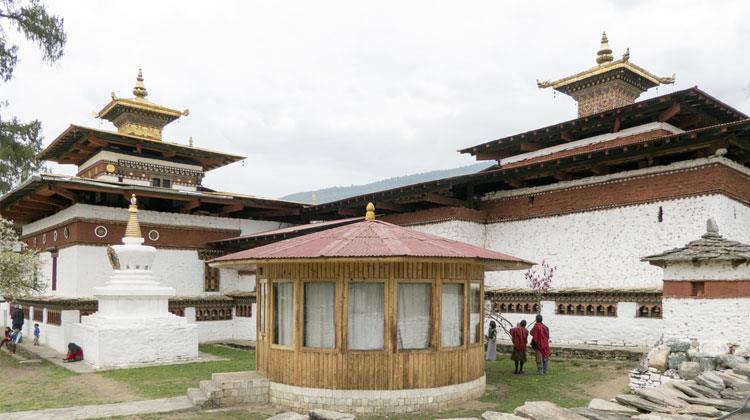Monasteries






Taktsang Monastery
The Taktsang Monastery (also known as a Dzong) is high up in the Paro valley area of the country and work started on this amazing structure in 1692, the same year as the first Salem Witch Trial. It is said that the famous guru Padmasambhava pursued his meditations here for three months. It is quite possibly the most famous cultural symbol of Bhutan.Local legend has it that the guru flew here from Tibet on the back of a tigress which gives the place its other name – the Tiger’s Nest. The cliff upon which it hangs is 3,000 feet above the valley below. One of the access routes is known as the Hundred Thousand Fairies – and you can see why from the picture below. Simply put, the place is magical.
Punakha Dzong
The old capital of the country (till 1955) is Punakha and it is home to perhaps the most imposing Dzong in the country. When built they also served as protective fortresses so they are usually set in the most commanding position geographically – such as at Taksang or here at the confluence of the rivers.It was finished in 1638 – and as such is the second oldest in the country. Each year there is a festival at the Dzong called Demoche and it recalls the 1639 invasion of the country by the Tibetans who were successfully repulsed.
Tango Dzong
If you head 14 km north from the capital city of Thimpu, near Cheri Mountain, you will be introduced to a monastery built in Dzong fashion. The word ‘tango’ means ‘horse head’ in Bhutanese language and this name derived from the horse headed ‘Hayagriva’, the main deity of wisdom and knowledge. First Zhabdrung, Ngawang Namgyal, meditated in the cave of this monastery.Trongsa Dzong
The Bhutanese district of Trongsa is honored with the largest fortress of Bhutan, located in the centre of the country. Now-a-days it serves the purpose of headquarters and an important administrative building of Trongsa district. This place is sometimes called as ‘way to heaven’.With the backdrop the Black Mountains and wild rocky area, it is located on a spur above the Mangde Chhu valley. This situation creates a magnetic view and haunts people throughout the globe.
Gangteng Monastery
Located in the Wangdue Phodrang district of central Bhutan, the Gangteng Monastery is the main seat based on the well-known Pema Lingpa’s tradition and was established in 1613. It is situated on a spur amidst the Gangteng village, in the west side of the Black Mountain on a range above 5000 meters. Tourists need to travel 75 km from Thimpu to reach here.Tashichho Dzong
On the northern edge of Thimpu, you will come across one of the finest tourists spot in Bhutan, Tashichho Dzong. Since 1968, it has been the seat of the civil government of Bhutan. This monastery presently contains the throne room and offices of the king, the cabinet secretariat and the ministries of home affairs and finance. Thirty shrines, chapels and temples are found inside the Dzong.Kyichu Lhakhang
This monastery in Paro was originally founded on 7th century. It is actually a Jowo temple of Kyichu and one of the oldest in Bhutan. It is said that Pema Lingpa revealed and restored the temple like before, when two Jowo temples was not being seen. It is said that there are two orange trees in the courtyard of Kyichu Lhakhang, which bear fruits all the time of a year.
Great Trip with Great Company
